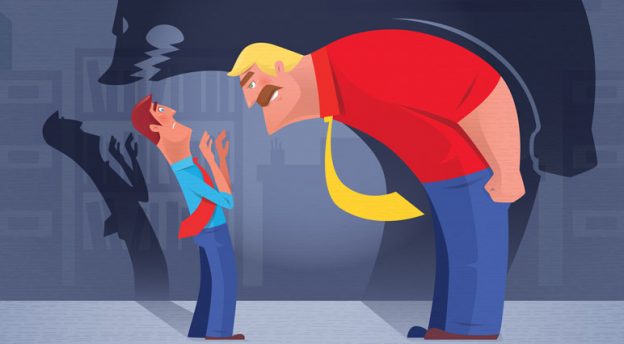Like massive thunder clouds rolling in from the horizon, there is something ominous and fascinating about watching truly “bad” leaders rise to power. Despite the fact these leaders are not worth following, they often wield a powerful, dark attraction. We rarely see the writing on the wall before it’s too late. Despite their manipulation, lies, bullying and other negative behaviors, they rise through the ranks – and we let them.
We are eventually left wondering how they achieved such power, and we kick ourselves for ever having trusted or followed them. Last year Harvard Business Review asked the question, “Why do we fall for charismatic narcissists?” Research on leadership development and bad leadership has grown exponentially over the past decade or more. And from Kenneth Lay to Bernie Madoff, Jim Jones to Adolf Hitler, history is riddled with highly influential, highly destructive leaders.
Why do we let bad leadership rise to power?
These questions are real problems for organizations, especially as our information-rich society can shine a light on even the most minor leadership missteps. Here are a few initial answers:
1 Most of us don’t actually want to be leaders.
Leadership is hard. It requires a willingness to make tough calls, take risks, take charge, and even to fail. Many of us are not interested in any of that. People who do possess these characteristics often step up and fill vacuums of power.
2 We romanticize leadership.
Humans are wired for self-preservation and risk aversion, so we look for the biggest, strongest, smartest and most dynamic people to lead us. We look for leaders with “big” personalities, only to find that excessive extroversion can be sociopathy, excessive empathy can be Machiavellianism, excessive confidence can be narcissism, excessive poise can be psychopathy, and so on.
3 Authority begets authority.
We are also wired to trust authority. We assume leaders have earned a position of authority by possessing an abundance of the skills and characteristics we look for in a leader, including a desire to serve. Even when there is evidence to the contrary, we assume that our leaders “know best.”
4 Time and opportunity reveal character.
On the surface, good and bad leaders look similar. Dark intentions often surface after leaders have had the time to gain trust, build power, and earn opportunities. Some bad behaviors (e.g., embezzlement) might not cross a leader’s mind until s/he is presented with such an opportunity. As the saying goes, “Absolute power corrupts absolutely.”
5 Pressure also reveals character.
All else being equal, even well-intentioned leaders can fall prey to “dark” tendencies. When stressed, we go into “fight or flight” mode and lose some control over our actions. We revert into more instinctual behaviors and our personality (including its “dark” side) can take over. Leaders in high-pressure situations are more likely to unconsciously act out the extreme parts of their personality, even to the detriment of themselves or others.
Our research at Leadership Worth Following suggests that while these dynamics are difficult to manage, we can leverage the science of organizations and leadership assessment, including our new DRiV™ tool, to help predict the Character to Lead. In future posts, we will continue unraveling this mystery, focusing on how to avoid or mitigate this dark attraction.

